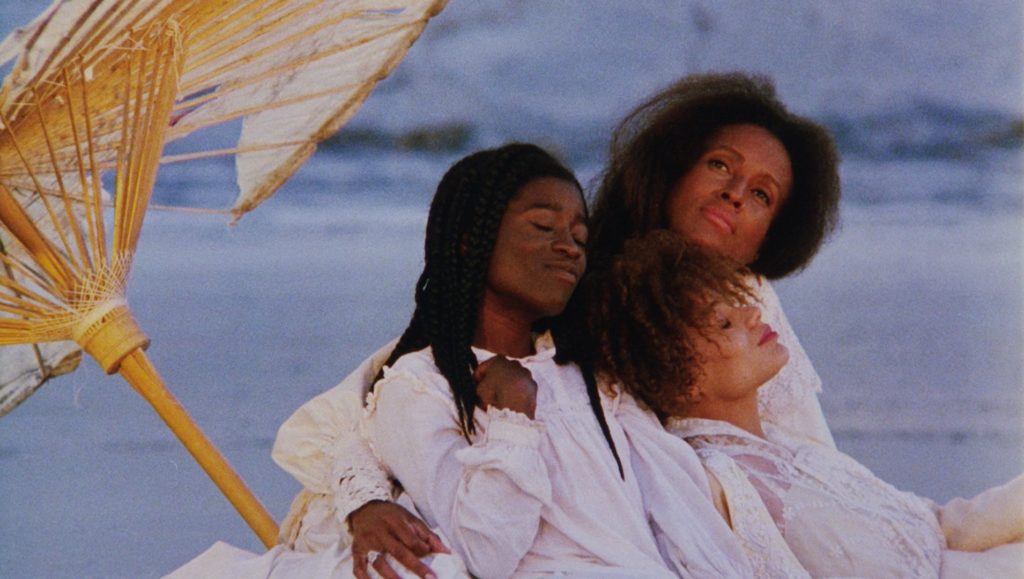
Sat 1/7, Sat 1/14-Sat 2/25
Later this month will come the announcement of the Academy Award nominations, which in the past featured a list heavy on men and light on diversity. While we’d like to thank the Academy for adding more than 600 new voters, many of them minorities and women, a century has passed with female filmmakers in particular being overlooked.
Hoping to expose audiences to such films is the new series “The Female Gaze: Landmark Films by Women,” which takes place 1/14 through 2/25 at the Cinematheque at the Cleveland Institute of Art. The program presents nine movies, eight of which are considered groundbreaking by female filmmakers and were recently restored and rereleased.
The list of films includes Lois Weber’s The Dumb Girl of Portici and Shoes, Dorothy Arzner’s Dance, Girl, Dance, Agnès Varda’s Le Bonheur (Happiness), Julie Dash’s Daughters Of The Dust, Cheryl Dunye’s The Watermelon Woman, Chantal Akerman’s Je Tu Il Elle (I You He She) and News From Home, and Susan Seidelman’s Smithereens.
CoolCleveland talked to Cinematheque director John Ewing about “The Female Gaze.”
What’s the impetus behind focusing a series around women filmmakers?
I had in mind to do this for a while. I subscribe to Sight & Sound magazine, a British film publication. They did an issue a number of months ago about something like 100 overlooked films by women that was interesting. It got me thinking about women filmmakers. I realized we haven’t done a women’s filmmaker series for quite a while. The other thing was I knew there were a number of films by women being digitally restored and rereleased. It just seemed like a good opportunity. And then, of course, I thought Hillary Clinton would win and that might be a good time in January and February to salute women filmmakers. That didn’t happen but we’ll still have the series.
What stands out about “The Female Gaze” is that it features an eclectic mix of films.
Some of these I haven’t seen. To start off with the Lois Weber films, I knew the name but I really didn’t know how prominent she was in early Hollywood. She’s kind of credited as the co-director with her husband, but apparently she was really the primary force. She was a major figure in the silent era. Shoes is considered by many people her masterpiece. But the focus of the two films is maybe The Dumb Girl of Portici because it has the ballerina Anna Pavlova, who was a huge international star of the time. And this is the only time she ever appeared on film. If anybody ever wanted to see her, this is like their only opportunity to do so.
What can you tell us about Daughters of the Dust?
That’s a film we premiered at the Cinematheque in 1992 by Julie Dash, who is an African-American filmmaker. This is one of the landmark American independent films. It’s set in the Gullah community, which I didn’t know anything about and still don’t know a whole lot about. It’s a group of former slaves who lived on the Sea Islands off South Carolina. This is a period piece about how these people in this community decided they’re going to need to move north to get jobs. We’re talking about the dawn of the 20th century. Julie Dash hasn’t really made anything major since then. This is really kind of a landmark film that’s now celebrating its 25th anniversary. It’s being digitally restored and being rereleased. When we debuted it at the Cinematheque, nobody thought it would be the hit it was back at the time. It was well received.
How would you describe the film?
It’s not really narratively vivid. It’s a very dreamy film, beautifully photographed. It’s as gorgeous as Lawrence of Arabia in its own way. I have not seen Beyoncé’s Lemonade, but a lot of people have mentioned the visuals are heavily influenced by Daughters of the Dust.
Let’s switch over to Smithereens.
I saw it when it came out, and I haven’t seen it since then. Susan Seidelman was a pioneering American independent filmmaker. This was kind of during the late ’70s and early ’80s. It was the punk era but she really came out of the Soho/downtown Manhattan New York art scene. And Smithereens was the first American independent film to actually compete at the Cannes Film Festival. It’s about a kind of obnoxious young woman from New Jersey who decides to move to Manhattan and become part of the punk rock scene.
Smithereens seems as though it would make a good double feature with Syd and Nancy.
Yeah, and Seidelman’s next film was Desperately Seeking Susan, which was a big hit that kind of dealt with the same quirky downtown milieu but probably in a more commercial way than this one. I kind of remember just the look of Smithereens. It’s very much that era.
Finally, as a whole do you feel as though women filmmakers are still overlooked?
I think a lot of these women are largely overlooked but they certainly have come into their own much more prominently in the past few years. Kathryn Bigelow, strangely enough, was the first woman to win the Oscar for Best Director, and I don’t think we’ve had another one since then.
Find a full schedule of films here.